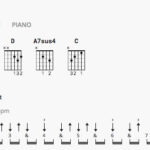Boss has produced some of the most iconic chorus guitar pedals in the history of music. Among these, the CE-5 Chorus Ensemble and the CH-1 Super Chorus stand out as staples on countless pedalboards. However, not all CE-5s and CH-1s are created equal. Boss made significant changes to these models in October 2001, transitioning from analog to digital circuitry. Understanding these differences is crucial for guitarists seeking a specific chorus tone. This article delves into the versions of the Boss CE-5 and CH-1 chorus pedals, providing you with the knowledge to identify whether you have an analog or digital model and what that means for your sound.
Boss CE-5 Chorus Ensemble: Analog vs. Digital
The Boss CE-5 Chorus Ensemble has seen two main iterations. The original CE-5, produced before October 2001, is an analog chorus pedal, closely related to the esteemed CE-2 and CE-3 chorus pedals. This first version utilizes the Panasonic MN3007 Bucket Brigade Device (BBD) chip and the associated 3101 clock driver, components known for their warm and lush analog chorus tones.
CE-5 Analog Version (Pre-October 2001)
The analog CE-5 delivers a rich, classic chorus sound that many players associate with vintage Boss pedals. Its circuitry, based around the MN3007 BBD, provides a smooth modulation that thickens your guitar tone without sounding harsh or artificial. Identifying an analog CE-5 is straightforward. You can check the circuit board (PCB) for the designation “CE-5” – this will be present on the earlier analog version.
For a quick external check, the serial number is your best indicator. If the second letter/first number combination in the serial number is earlier than “P1”, you have the analog version. This means serial numbers like “N9”, “O0”, and earlier signify an analog CE-5.
CE-5A Digital Version (Post-October 2001)
In October 2001, Boss transitioned the CE-5 to a digital design, designated as CE-5A. This update involved a complete restructuring of the pedal’s internal components, moving to surface-mounted components and replacing the analog BBD chip with digital circuitry. While still a chorus effect, the digital CE-5A has a different sonic character compared to its analog predecessor.
Identifying a digital CE-5A is also possible via the serial number. If the second letter/first number combination is “P1” or later (e.g., “P1”, “R2”, “S3”), you have a digital CE-5A. Additionally, all digital CE-5s feature a dark gray label, which can be another visual cue, though the serial number check is definitive.
Boss CH-1 Super Chorus: Analog and Digital Revisions
Similar to the CE-5, the Boss CH-1 Super Chorus also underwent a significant change in October 2001, moving from analog to digital circuitry. The original CH-1, like the analog CE-5, employed the MN3007 BBD chip, delivering an analog chorus effect.
CH-1 Analog Version (Pre-October 2001)
The analog CH-1 is known for extending the chorus effect into higher frequencies, a characteristic that differentiates it from the CE series chorus pedals. Some guitarists prefer the CH-1 for solos, finding its brighter chorus sound more suitable for lead lines, while reserving CE pedals for rhythm and chord work. The EQ knob on the CH-1 is a tone control, allowing you to shape the chorus sound from a more traditional voicing to a brighter, edgier chorus unique to the CH-1.
Analog CH-1 pedals, like their CE-5 counterparts, use the MN3007 BBD chip. To identify an analog CH-1, again, the serial number is the most reliable method. If the second letter/first number combination is earlier than “P1”, you are in possession of an analog CH-1.
CH-1 Digital Version (Post-October 2001)
After October 2001, the CH-1 transitioned to a digital design, mirroring the changes made to the CE-5. This digital revision also utilizes surface-mounted components and digital circuitry, replacing the analog BBD chip. Digital CH-1 pedals, similar to the CE-5A, carry a dark gray label, but serial number verification remains the most accurate identification method. A serial number with a second letter/first number combination of “P1” or later indicates a digital CH-1.
Analog vs. Digital Boss Chorus: Sonic Differences and Preferences
The shift from analog to digital circuitry in the Boss CE-5 and CH-1 chorus pedals resulted in subtle but noticeable sonic differences. Analog chorus pedals, utilizing BBD chips, are often described as warmer, smoother, and more organic sounding. They tend to have a softer modulation and can impart a subtle compression to the signal, contributing to a vintage vibe.
Digital chorus pedals, while capable of producing a wide range of chorus effects, can sometimes sound cleaner and more pristine. Some players find digital chorus pedals to be less warm and potentially more sterile compared to their analog counterparts. However, digital designs can also offer advantages in terms of versatility and consistency.
The choice between an analog and digital Boss CE-5 or CH-1 ultimately comes down to personal preference and the specific sonic characteristics you seek in a chorus effect. Knowing how to identify the version of your pedal empowers you to understand its circuitry and anticipate its sound.

